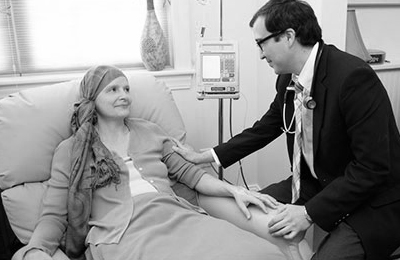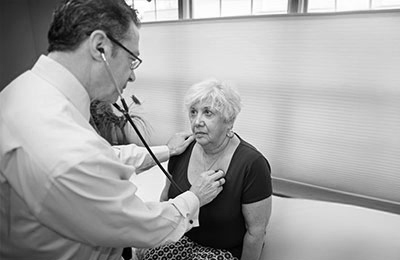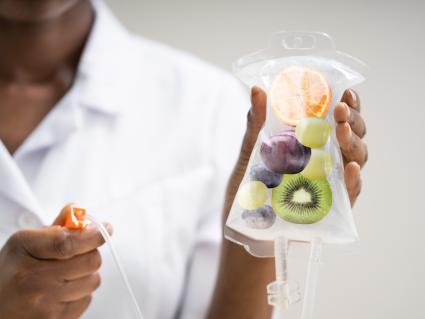31 Breast Cancer Facts: Every Woman Should Know

October is Breast Cancer Awareness Month!
For this month’s blog, to change it up a bit, I decided to list 31 breast cancer facts, one for each day of October. So here we go…
Did you know that:
1.Breast cancer is the most commonly diagnosed cancer worldwide.
2.In the United States, breast cancer accounts for over 230,000 cases each year and is responsible for over 40,000 deaths.
3.Breast cancer death rates have been decreasing since the 1970s, and this decrease in mortality is likely due at least in part to improved breast cancer screening and treatment.
4.Less than 1% of all breast cancers occur in men.
5.The lifetime risk for breast cancer for women is one in eight, and for men, one in 1,000.
6.Breast cancer is generally a hormone-driven cancer, and higher life-time risk is associated with higher estrogen exposure.
7.Factors that increase risk for breast cancer include drinking more than one serving of alcohol per day, taking hormone replacement therapy and birth control pills, early first period and late menopause, low intake of fruits and vegetables, obesity, exposure to radiation, aging, family history (especially in first degree relatives) and sedentary lifestyle.
8.High breast density on mammograms correlates with increased breast cancer risk.
9.BRCA1 and BRCA2 gene mutations are associated with a 60-80% lifetime risk for breast cancer.
10. Bilateral mastectomies and removal of ovaries and uterus in patients with BRCA1 or BRCA2 gene mutations decrease risk of development of breast cancer.
11.Night shift work (“light at night”) with disruption of the circadian rhythm can put women at increased risk for breast cancer, and this is linked with lower melatonin levels.
12. Exercise, weight loss, cruciferous vegetables, and lignin-rich flaxseed can reduce the stimulatory effect of estrogen on breast tissue.
13. Most cases of breast cancer are found by abnormalities seen on mammograms.
14. Suspicious findings that could suggest breast cancer (and should be brought to a doctor’s attention) include: a physical change in the breast such as a lump, skin thickening, or change in breast size or shape; changes in the nipple such as retraction or fluid from nipple; redness or hardness of the breast; or a lump in the underarm lymph nodes.
15. Rarely, the first sign of breast cancer can be a lump or persistent pain located elsewhere in the body (ex: lump above collar bone, back or hip pain).
16. Ductal carcinoma in situ (DCIS) is non-invasive and therefore Stage O disease; lobular carcinoma in situ (LCIS) is not breast cancer in itself but is a risk factor for the development of breast cancer.
17.Pathologically, infiltrating ductal cancer is the most common type of invasive breast cancer, followed by infiltrating lobular cancer, and some more rare subtypes.
18. Most breast cancers are ER (estrogen receptor) positive, but only approximately 20% are HER2neu (human epidermal growth factor) positive.
19. Staging for breast cancer usually involves at least a biopsy of the cancer, followed by either lumpectomy or mastectomy and lymph node assessment, and scans may include a bone scan, possible breast MRI, and CAT scan and possible PET scan.
20. The American Joint Committee’s TNM system is used for staging of breast cancer, where T stands for size of tumor, N for number of armpit lymph nodes involved, and M for whether there is distant spread or metastases of cancer.
21. The term “adjuvant therapy” describes a treatment given after surgery to help prevent future recurrence of disease, and may include radiation, hormonal (endocrine) therapy, chemotherapy, and targeted therapy.
22. The Oncotype Dx 21-gene recurrence score is a test that may identify patients who are most and least likely to derive benefit from adjuvant chemotherapy, and it is indicated for patients with node-negative, ER-positive, HER2neu-negative breast cancer.
23. The management of DCIS has become controversial, and may include observation, lumpectomy with radiation and endocrine therapy, or mastectomy, depending on some features such as size and grade of tumor, but chemotherapy is not indicated.
24. For patients with hormone receptor-positive, HER2neu-negative breast cancer, treatment involves endocrine therapy (ex: Tamoxifen, or an aromatase inhibitor such as Anastrazole) with or without targeted agents.
25. For patients with hormone receptor-positive, HER2neu-positive breast cancer, a HER2-directed agent such as Herceptin is recommended plus endocrine therapy.
26. For patients with hormone receptor-negative, HER2neu-negative breast cancer, disease is known as “triple negative”, and chemotherapy is recommended; these patients do not respond to endocrine therapy, but endocrine therapy may be used to prevent a new breast cancer from forming.
27. For patients with hormone receptor-negative, HER2neu-positive metastatic breast cancer, Herceptin in combination with chemotherapy is recommended.
28. Radiation therapy may be recommended as part of adjuvant therapy for invasive breast cancer.
29. Chemotherapy may impair fertility in young women with breast cancer, and consultation with a fertility specialist is recommended.
30. Pregnancy after having had previous breast cancer with treatment is safe and may actually be protective in terms of future breast cancer risk.
31. All breast cancer survivors should pursue a healthy lifestyle that includes following an anti-inflammatory diet, a regular exercise program focusing on cardiovascular exercise, minimizing alcohol intake, refraining from smoking, minimizing exposure to environmental toxins, and practicing daily mindfulness and stress reduction.
I hope you have enjoyed this month’s blog, as well as the colorful leaves of autumn!





















